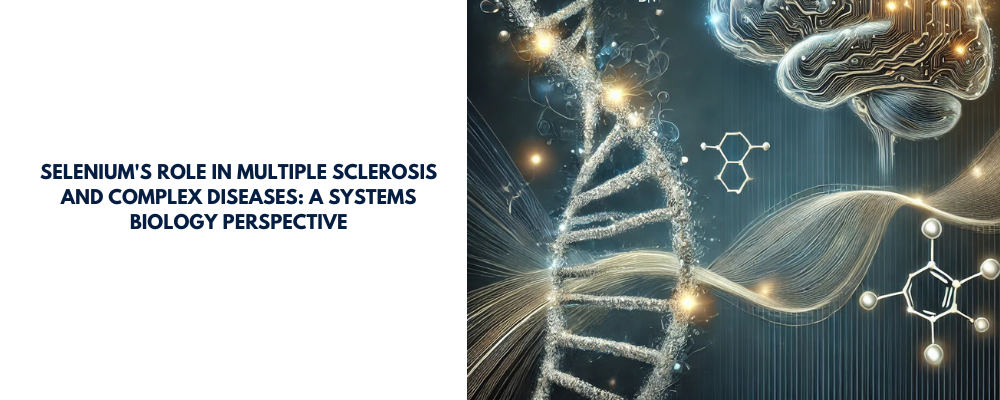Selenium's Role in Multiple Sclerosis and Complex Diseases: A Systems Biology Perspective

Selenium (Se), a vital trace element, plays a pivotal role in human health through its incorporation into selenoproteins. These specialized proteins, including glutathione peroxidases (GPXs) and thioredoxin reductases (TXNRDs), are essential for maintaining cellular redox balance, immune function, and thyroid hormone regulation. Selenium's involvement in preventing diseases like cancer, cardiovascular conditions, and neurodegenerative disorders highlights its potential as a therapeutic agent. However, its narrow range between deficiency and toxicity poses challenges for understanding its biological impact.
Selenium and Neurodegenerative Diseases
Among neurodegenerative diseases, multiple sclerosis (MS) stands out as a chronic inflammatory and autoimmune condition of the central nervous system (CNS). Research indicates that selenium and its associated selenoproteins might influence MS pathogenesis through their antioxidant and anti-inflammatory properties. For instance, reduced selenium levels and GPX activity have been reported in MS cohorts from Iran and Poland. However, conflicting data exist, with some studies showing no significant difference in selenium levels between MS patients and healthy controls.
Genetics of Selenium in MS and Beyond
Selenoprotein gene polymorphisms are an emerging area of interest, particularly their potential links to MS susceptibility. Variants in genes like SELENOS and SELENOP have been implicated in diabetes and cardiovascular diseases, suggesting a broader relevance of selenium-related genetics in complex diseases. In MS, the intricate interplay between selenium homeostasis and genetic predispositions requires further exploration through genomic and transcriptomic studies.
Systems Biology Approach to Selenium
Recent advances in systems biology offer a comprehensive framework to study selenium’s multifaceted role in health and disease. By integrating data from genomics, proteomics, and ionomics, researchers can uncover interactions between selenium and other trace elements or biological pathways. For example, ionomic studies have demonstrated selenium's interaction with metals like iron, zinc, and copper, potentially affecting CNS function and inflammation in MS.
Therapeutic Implications of Selenium
Emerging evidence suggests selenium supplementation might mitigate oxidative stress and inflammation in neurodegenerative conditions. In MS, antioxidant-rich selenocompounds could provide neuroprotective effects, though optimal dosing and individual selenium status must be considered to avoid toxicity. Future randomized clinical trials are essential to validate these therapeutic avenues and explore selenium's role in modulating immune responses in MS.
Challenges and Future Directions
While selenium's potential in disease prevention and therapy is promising, significant challenges remain. The heterogeneity of study designs, variability in selenium status across populations, and lack of standardized supplementation protocols hinder definitive conclusions. Moreover, the mechanistic underpinnings of selenium's effects in MS and other diseases require in-depth investigation through omics technologies and advanced bioinformatics approaches.
Conclusion
The intricate relationship between selenium and complex diseases like multiple sclerosis underscores the need for multidisciplinary research. By leveraging systems biology, scientists can uncover selenium’s role in maintaining health and preventing disease, paving the way for novel diagnostic and therapeutic strategies. As we deepen our understanding of this essential micronutrient, its integration into precision medicine holds great promise for addressing complex diseases.
Reference:
Ying, H., & Zhang, Y. (2019). Systems biology of selenium and complex disease. Biological Trace Element Research, 192(1), 38-50.
